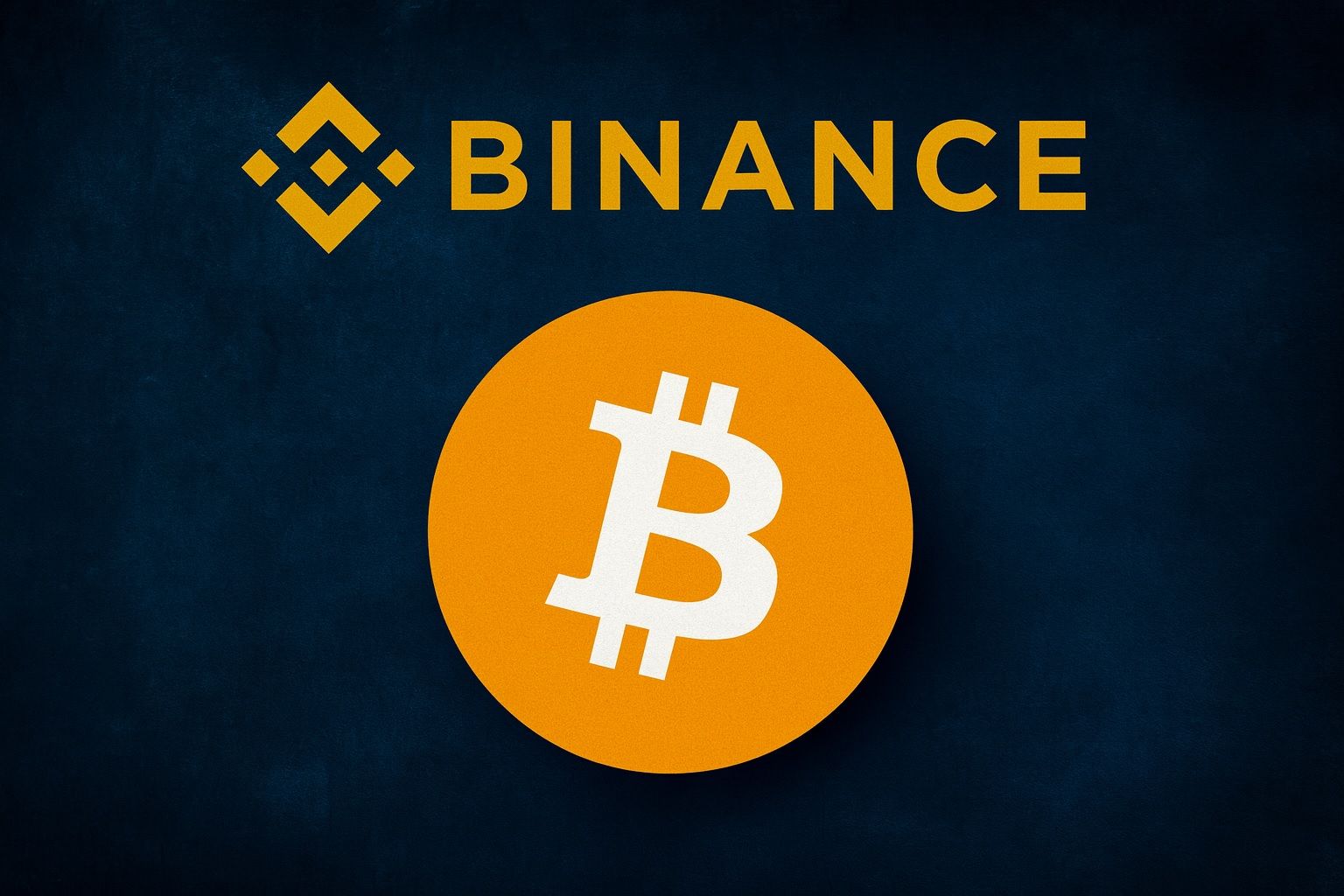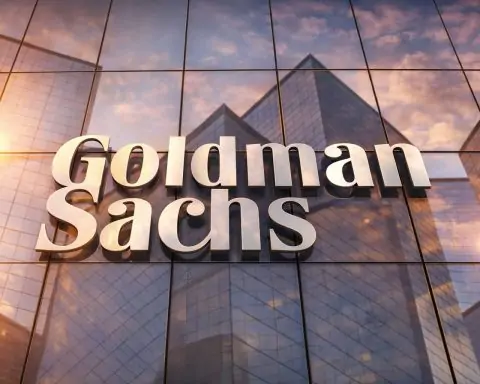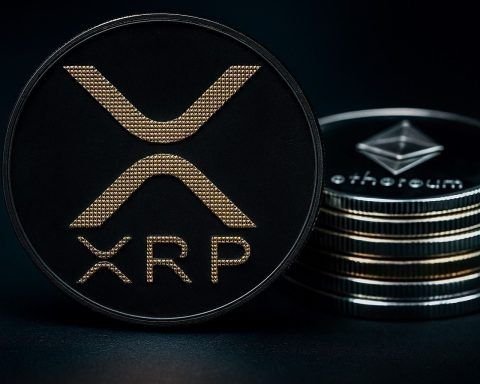- Record Liquidations: A surprise 100% tariff threat by former President Trump triggered a crypto market “Black Friday” crash on Oct. 10–11, wiping out $19–20 billion in leveraged positions – the largest one-day liquidation event in crypto history [1]. Over 1.6 million traders were liquidated within 24 hours [2] as Bitcoin plunged from ~$125,000 to ~$104,000 in hours [3], dragging Ethereum and altcoins down 15–40%.
- Binance Outages & Initial Compensation: Binance – the world’s largest crypto exchange – suffered technical failures during the volatility, with halted orders and frozen accounts as prices on its platform dislocated far below other exchanges [4] [5]. Certain Binance-pegged tokens (USDE, BNSOL, WBETH) de-pegged to as low as $0.65, causing collateral liquidations [6] [7]. Binance’s co-founder Yi He apologized and urged users who lost funds “attributable to Binance” to contact support for case-by-case review [8]. Within 24 hours, Binance paid ~$283 million to fully reimburse affected users’ losses from those de-peg liquidations [9], while denying its platform was the cause of the broader market crash [10].
- “Together Initiative” – $400M Recovery Plan: Amid public pressure, Binance on Oct. 14 unveiled a $400 million “Together Initiative” to restore confidence [11]. This includes $300 million in token vouchers (stablecoins) for retail traders who suffered forced liquidation losses during the crash [12]. Eligible users are those who lost over $50 and 30%+ of their portfolio in the event [13]. Voucher distributions (ranging $4 to $6,000 per user) began Oct. 15 [14]. In addition, Binance is offering a $100 millionlow-interest loan fund to help “severely impacted” institutional clients recover liquidity and resume trading [15]. Separately, Binance’s BNB Chain also launched a $45 million “Reload Airdrop” to compensate over 160,000 memecoin traders hit by the crash’s volatility [16].
- Market Rebound & Outlook: Bitcoin has since rebounded above ~$111,000 [17] (recently back above $112K [18]) and crypto markets are stabilizing after the shock. Crypto-linked stocks like MicroStrategy (MSTR), Coinbase (COIN), Circle (CRCL), and Robinhood (HOOD), however, remained down in the crash’s wake [19]. Many analysts view the plunge as a temporary shake-out rather than a trend reversal [20]. Brokerage Bernstein even reaffirmed its $200K Bitcoin price target for early 2026, citing robust institutional demand driving the next leg of the bull run [21]. “Right now, we’re kind of in a rebound-to-stable position. Tomorrow is a new day,” said crypto forensic expert Joshua Duckett on Oct. 12 as markets steadied [22]. Historically, October is often a bullish month – crypto analyst Timothy Peterson notes Bitcoin typically sees ~+20% gains in “Uptober,” and this pattern could hold if history rhymes [23]. Still, some caution that geopolitical risks remain: a CoinDesk market report warned “all bets are off if U.S.–China tensions continue,” and veteran investor Ray Dalio advises hedging volatility with ~15% portfolio allocation to gold [24].
Biggest Crash on Record Jolts Crypto Markets
Cryptocurrency markets were roiled by an unprecedented crash on Oct. 10–11, 2025, sparked by geopolitical shock. On Oct. 10, former U.S. President Donald Trump stunned markets by threatening 100% tariffs on Chinese imports, reigniting trade-war fears [25]. Investors fled risk assets en masse, triggering a flash crash across crypto markets. Within hours, Bitcoin collapsed ~16%, tumbling from around $125,000 to lows near $104,000 [26]. Major altcoins plunged even further – Ethereum fell from ~$4,500 to the mid-$3,000s (−15–20%), while many smaller coins nosedived 30–80% in the panic selling [27]. As one outlet summarized, “the crypto market just experienced its largest single-day meltdown on record” [28].
By the time the dust settled, an estimated $19 billion in leveraged crypto positions had been liquidated across exchanges in 24 hours [29]. Research firm CoinGlass recorded over 1.6 million trading accounts – mostly long positions – forcibly closed as margin calls cascaded [30]. This exceeded the scale of liquidations seen in past fiascos like the 2020 COVID crash, the 2022 Luna collapse, or the FTX implosion [31]. One particularly intense period on Friday night (Oct. 10) saw $7B wiped out in a single hour as sell orders flooded in [32].
Notably, the turmoil didn’t stop at crypto – U.S. stock markets also tumbled that day (the Nasdaq fell 3.6%, S&P 500 down 2.7% on Oct. 10) amid the tariff scare [33]. However, crypto bore the brunt of the fear. The sector’s sentiment gauge, the Crypto Fear & Greed Index, plunged overnight from “Greed” (64) to “Fear” (27) [34]. As Fundstrat analyst Sean Farrell noted, the tariff escalation was “undeniably the catalyst” for the sell-off [35] – essentially snapping Bitcoin’s prior correlation with safe-haven gold and making it trade more like a high-risk asset again in the face of macro uncertainty [36] [37].
Binance Buckles Under Stress and Faces Backlash
The extreme volatility overwhelmed centralized exchanges, and Binance – which handles ~40% of global crypto trading – was hit hardest by the tidal wave of activity [38] [39]. Users reported that Binance’s trading engine struggled under record volumes: orders failed to execute, price feeds lagged, and some accounts were temporarily frozen during the height of the chaos [40]. In the midst of this, several tokens on Binance that are meant to mirror external assets became unpegged. For instance, Ethena’s USDe stablecoin (a USD proxy) briefly cratered to ~$0.65 on Binance, and Binance’s wrapped versions of Solana (BNSOL) and staked Ether (WBETH) also deviated far below their real market value [41] [42]. These anomalies triggered auto-liquidations for users who had used those tokens as collateral on Binance’s margin platform [43].
Binance immediately acknowledged the service disruptions late on Oct. 10, attributing them to the “massive influx” of traders and turbulent market conditions [44]. By the next day (Saturday Oct. 11), Binance moved to damage-control: Co-founder Yi He, who heads customer service, issued a public apology and promised that any losses “attributable to Binance’s issues” would be compensated [45]. “Due to significant market fluctuations … some users have encountered issues with their transactions. If you have incurred losses attributable to Binance, please contact our customer service… We will review… and provide compensation accordingly,” Yi He wrote [46]. She emphasized that only losses caused by Binance’s own technical failures – not general market losses or unrealized paper losses – would be covered [47]. Binance’s new CEO Richard Teng echoed this, vowing the company would take responsibility for its mistakes “without making excuses” [48].
True to its word, Binance’s team worked through the weekend to calculate and reimburse affected users. By Oct. 13, the exchange said it had fully compensated all users who had positions liquidated due to the USDe, BNSOL, and WBETH de-pegging incident, as well as those hit by delays in internal transfers or Earn product redemptions during the crash [49] [50]. In total, Binance paid out roughly $283 million in this initial compensation wave [51] – a staggering sum, yet one the company covered within 24 hours using its own funds. Binance also swiftly deployed fixes to prevent a repeat: it began tightening its price index mechanisms (adding more robust price sources and floor thresholds for illiquid tokens) and increasing real-time risk checks on its platform [52].
Despite these efforts, Binance faced sharp criticism from some in the crypto community. Given Binance’s dominant role, speculation swirled that its platform glitches might have exacerbated the crash – or even triggered it. Social media buzzed with claims that Binance’s issues were to blame for the depth of the sell-off. The company forcefully denied this narrative. It released data showing the broader market meltdown was already in full swing before the Binance-specific de-peg events occurred [53]. In fact, crypto prices hit their lows around 21:20 UTC on Oct. 10 during the macro-driven sell-off, whereas the severe USDe/BNSOL/WBETH de-peg on Binance only unfolded after 21:36 UTC, after the market’s nadir [54]. “We wish to clarify that it was not the case,” Binance stated regarding rumors it caused the crash, explaining that its issues were a symptom of the crash, not the cause [55]. Still, for many shaken traders the episode was a reminder of the single-point risks of centralized venues. The contrast with decentralized exchanges was stark – while Binance and others halted, decentralized protocols like Uniswap kept running flawlessly, processing record volumes with no downtime [56] [57]. As one DeFi developer put it, “that stress test was wild, but DeFi worked flawlessly” [58] – a pointed critique of CeFi fragility.
Binance Launches $300M Payouts and $100M Loan Fund (“Together Initiative”)
Facing both user outrage and anxious markets, Binance has rolled out an ambitious relief package to restore trust. On Oct. 14, the exchange announced an “industry recovery and confidence rebuilding plan” dubbed the “$400 Million Together Initiative” [59]. According to Binance, this initiative is about “injecting momentum into ecosystem participants’ recovery” and shoring up the market’s stability after the shock [60].
$300M for Retail Traders: The centerpiece is a $300 million distribution of token vouchers (denominated in stablecoins) to reimburse individual traders who were hardest hit by the crash. Binance specifies that users across its futures and margin platforms who incurred forced liquidation losses of $50 or more during Oct. 10–11 and for whom those losses amounted to at least 30% of their net assets (prior to the crash) will receive voucher compensation [61]. In practice, this targets the “rekt” traders who got wiped out by the unprecedented volatility. Binance says voucher amounts will range from $4 up to $6,000 per affected user, proportional to their losses [62]. Distribution began on Oct. 15, roughly 24 hours after the announcement, with vouchers credited directly to accounts [63]. Users can presumably redeem these for trading balance or withdraw them. By limiting eligibility to those with significant relative losses, Binance aims to meaningfully help users who lost nearly a third (or more) of their portfolio in the blink of an eye.
$100M for Institutions: Binance is also allocating $100 million to a low-interest loan fund for institutional clients who were “severely impacted” by the market dislocation [64]. This acknowledges that not only retail traders, but also funds, market makers, and other large players suffered liquidity crises during the crash. The loan program – accessible by application through Binance account managers – is intended to alleviate liquidity pressures and keep big traders solvent and trading [65]. “We expect this to inject momentum into ecosystem participants’ recovery, alleviate liquidity pressures, and maintain stable operations for ecosystem partners,” Binance’s statement noted of the loan fund [66]. Affected VIP and institutional users can work with Binance to quickly secure capital infusions, with Binance promising fast responses and confidential handling of these cases [67]. Essentially, Binance is acting as a lender of last resort for parts of the crypto market, aiming to prevent a wider contagion or long-term loss of trading volume stemming from the crash.
Broader Recovery Efforts: Binance’s initiative is part of a larger industry recovery effort underway. In the days after the crash, Binance’s affiliated blockchain ecosystem also took steps to compensate niche communities. The BNB Chain (which underpins many Binance Smart Chain tokens) launched a $45 million “Reload Airdrop” on Oct. 13 to support over 160,000 memecoin traders who were wrecked by the volatile swings [68]. This airdrop focuses on highly speculative meme-token markets that saw outsized liquidations (many retail traders in meme coins use BNB Chain’s decentralized exchanges and got hit hard). Moreover, Binance has indicated it will continue to bolster its risk controls: beyond the immediate fixes, it’s evaluating deeper safeguards like better circuit-breakers, improved index pricing (so one exchange’s anomalies don’t overly affect global pricing), and scaling up its backend infrastructure for peak loads [69]. The company’s leadership maintains that regaining user trust is paramount. “The best we can do now is make sure something like this doesn’t happen again,” a Binance spokesperson said, underscoring a commitment to learn from the failures.
Markets Stabilize as Experts Foresee Rebound
Following the weekend carnage, the crypto market has shown signs of stabilization heading into mid-October. By Oct. 12, Bitcoin had already bounced off its lows to around $111,000–$112,000 [70], and it has largely held in that range through this week. As of Oct. 16, BTC remains near the $112K level [71], about 10% below its pre-crash peak but well above the panic bottom. Ethereum likewise recovered to roughly $4,000 [72], after dipping into the mid-$3,000s at the height of selling. Major altcoins have likewise pared some losses. The rapid intervention by exchanges and the broader crypto community appears to have helped restore a measure of confidence.
Traditional markets are also finding their footing. Crypto-related equities, however, have lagged in the aftermath – a reminder of potential second-order effects. For example, shares of crypto-linked companies like MicroStrategy (which holds billions in BTC), Coinbase (the largest U.S. exchange), Circle (issuer of USDC stablecoin), and Robinhood all fell in the days after the crash [73]. Many of these stocks were down several percent through Oct. 14 as investors reassessed crypto exposure risks [74]. (Coinbase’s stock was also nearing a quarterly earnings report, adding to volatility [75].) Still, these moves have been relatively modest compared to the crypto price swings, and some analysts see them as buying opportunities if one believes the crypto uptrend remains intact [76].
Looking ahead, a number of crypto market watchers express optimism that this shock will be short-lived. “Many analysts view the crash as short-term turbulence,” noted TechStock² in a report, “not a sign of a broken market” [77]. Indeed, prior to the plunge, crypto prices had been on a strong upswing – Bitcoin hit a record high above $125K on Oct. 5 [78], and Binance’s own BNB token had surged to an all-time high near $1,190 just days before the crash [79]. Those bullish fundamentals haven’t disappeared overnight. In fact, global crypto adoption and liquidity were at historic highs entering Q4, and Binance itself logged record user inflows in Q3 [80]. Some see the forced unwinding of leverage as a healthy reset that flushes out excess froth. “This was largely a leverage wash-out,” explained one fund strategist, “the long-term thesis for Bitcoin and crypto is unchanged.”
Wall Street firm Bernstein reinforced that view by reiterating its $200,000 BTC price target for early 2026 even after the crash [81]. They cited strong institutional demand (from ETFs, asset managers, etc.) poised to drive the next rally, once macro jitters settle [82]. Other experts agree that the bull market could resume. “There are still 21 days left in ‘Uptober’,” quipped crypto strategist Samson Mow mid-month, suggesting October could still live up to its historical reputation for crypto gains [83]. October has on average been one of Bitcoin’s best months, often delivering ~+20% returns, as analyst Timothy Peterson notes [84]. If that seasonal pattern holds, Bitcoin could see a robust recovery bounce before month-end.
At the same time, cautionary voices urge not to be complacent. The root cause of this crash – escalating U.S.–China trade tensions – is not fully resolved. Any further geopolitical shocks or hawkish economic news could test the market again. A CoinDesk markets team warned that if the trade war rhetoric intensifies or macro conditions worsen, “all bets are off” for a swift crypto recovery [85]. Renowned investor Ray Dalio counseled traders to maintain hedges and diversification, recommending holding around 15% in gold as an inflation and crisis hedge amid the uncertainty [86]. Even Binance’s $400M support package, while sizable, cannot singlehandedly reverse broader market forces – it mainly aims to buy time and confidence for traders to regroup.
For now, though, the immediate panic has subsided. Crypto markets are functioning normally again, and Binance’s decisive actions have been met with relief from many users. By compensating victims and improving infrastructure, Binance is clearly trying to turn a PR crisis into an opportunity to demonstrate accountability. “We’re sorry… and we’re hardening the system against repeats,” the exchange declared in its post-mortem [87]. This unprecedented payout may set a new precedent for how exchanges handle extreme events. It also underscores the vast resources top exchanges have accumulated (Binance’s war chest – including its SAFU insurance fund – allowed it to cover hundreds of millions in losses overnight).
Whether “Together” can fully restore trust remains to be seen, but the crypto community is digesting lessons from this historic crash. One takeaway is clear: volatility comes with the territory, but how platforms manage that volatility makes all the difference. DeFi advocates are touting the resilience of decentralized protocols that survived unscathed [88], while CeFi players like Binance are investing heavily to ensure they don’t falter under stress again. If the market indeed resumes its upward trajectory, Oct. 2025’s shake-out may be remembered as a harsh but formative stress test – one that prompted greater safeguards and perhaps brought an already bullish crypto market closer together in its aftermath.
Sources: Bloomberg [89] [90]; Coinspeaker [91] [92]; TechStock² (TS2) [93] [94]; Binance Announcement [95] [96]; Daily Hodl [97] [98]; Investopedia [99] [100]; TS2 [101] [102]; TS2 [103] [104]; TS2 [105].
References
1. ts2.tech, 2. ts2.tech, 3. www.coinspeaker.com, 4. news.bloomberglaw.com, 5. ts2.tech, 6. dailyhodl.com, 7. www.coinspeaker.com, 8. ts2.tech, 9. dailyhodl.com, 10. dailyhodl.com, 11. news.bloomberglaw.com, 12. news.bloomberglaw.com, 13. www.coinspeaker.com, 14. www.coinspeaker.com, 15. news.bloomberglaw.com, 16. www.coinspeaker.com, 17. ts2.tech, 18. www.investopedia.com, 19. www.investopedia.com, 20. ts2.tech, 21. ts2.tech, 22. ts2.tech, 23. ts2.tech, 24. ts2.tech, 25. ts2.tech, 26. www.coinspeaker.com, 27. ts2.tech, 28. ts2.tech, 29. ts2.tech, 30. ts2.tech, 31. ts2.tech, 32. ts2.tech, 33. ts2.tech, 34. ts2.tech, 35. www.investopedia.com, 36. www.investopedia.com, 37. www.investopedia.com, 38. ts2.tech, 39. ts2.tech, 40. ts2.tech, 41. www.coinspeaker.com, 42. dailyhodl.com, 43. dailyhodl.com, 44. ts2.tech, 45. ts2.tech, 46. ts2.tech, 47. ts2.tech, 48. ts2.tech, 49. dailyhodl.com, 50. dailyhodl.com, 51. dailyhodl.com, 52. ts2.tech, 53. dailyhodl.com, 54. dailyhodl.com, 55. dailyhodl.com, 56. ts2.tech, 57. ts2.tech, 58. ts2.tech, 59. www.coinspeaker.com, 60. www.coinspeaker.com, 61. www.coinspeaker.com, 62. www.coinspeaker.com, 63. www.coinspeaker.com, 64. news.bloomberglaw.com, 65. www.coinspeaker.com, 66. www.coinspeaker.com, 67. www.coinspeaker.com, 68. www.coinspeaker.com, 69. ts2.tech, 70. ts2.tech, 71. www.investopedia.com, 72. www.coinspeaker.com, 73. www.investopedia.com, 74. www.investopedia.com, 75. www.thecoinrepublic.com, 76. www.morningstar.com, 77. ts2.tech, 78. ts2.tech, 79. ts2.tech, 80. ts2.tech, 81. ts2.tech, 82. ts2.tech, 83. ts2.tech, 84. ts2.tech, 85. ts2.tech, 86. ts2.tech, 87. ts2.tech, 88. ts2.tech, 89. news.bloomberglaw.com, 90. news.bloomberglaw.com, 91. www.coinspeaker.com, 92. www.coinspeaker.com, 93. ts2.tech, 94. ts2.tech, 95. www.binance.com, 96. www.binance.com, 97. dailyhodl.com, 98. dailyhodl.com, 99. www.investopedia.com, 100. www.investopedia.com, 101. ts2.tech, 102. ts2.tech, 103. ts2.tech, 104. ts2.tech, 105. ts2.tech










